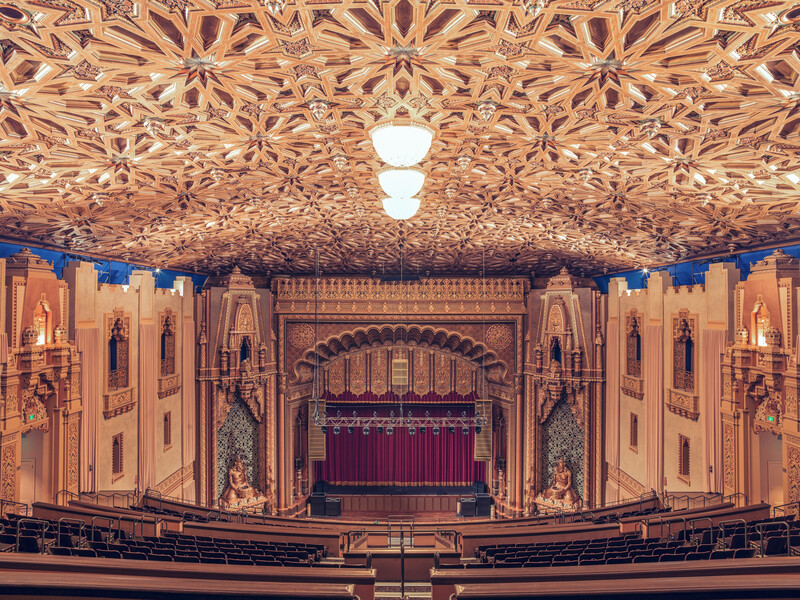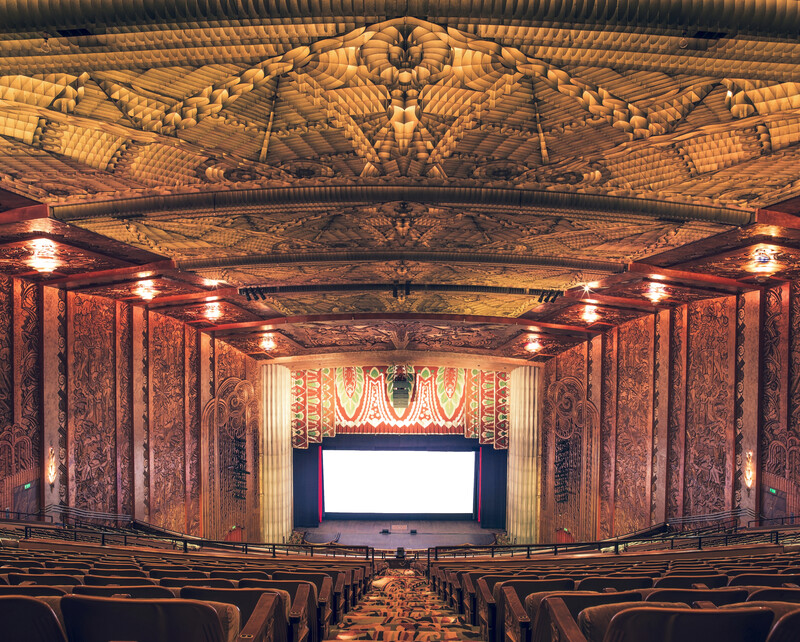Cinema
© Franck BohbotWhile at work on a series of photographs of Parisian stage theaters in 2011, French photographer Franck Bohbot discovered the Max Linder theatre, one of the first and most spectacular movie palaces in Paris. That discovery led to Bohbot’s Cinema series photographs of movie theatres built in the US during the Golden Age of Hollywood in the 1930s and 1940s. As with all of his work, this new project combines the art of photographing living spaces, of work or of leisure, with his personal interests, in this case, his passion for cinema. His goal with this series, still in progress, is to bring to light the movie theatres of the past and present that we experience mostly in the dark.
Bohbot began his photographic homage to the movies in 2014. The natural place to begin was Hollywood, which by the 1910s had become the center of the burgeoning global film industry. The early major Hollywood studios—Fox, MGM, Warner Bros. Paramount, Universal—eventually commanded the entire apparatus of the movie business, from production to distribution through national theatre chains. Bohbot’s “Cinema” series will inevitably be compared to Hiroshi Sugimoto’s iconic1978 “Theatres” series of black-and-white photographs of movie theatres and drive-in theatres. For that project, Sugimoto took one long exposure, from the beginning of the film to the end. The screen was the sole light source, evoking the illusion of the passage of time created by moving images, as well as the photographer’s preoccupation with the way in which a photograph captures time. In contrast, Bohbot’s subject is the empty space of the theatre, shot in full color with a medium-format, high-definition digital camera, and using a range of light sources, from the movie screen to ambient light, house lights, and his own lighting. Some of the images were shot in near darkness.


The result is an architectural typology of movie palaces—Art Deco, Art Nouveau, Baroque, Modern—that illuminates, in a dazzling range of color worthy of the big screen, the architectural grandeur that mirrored the Hollywood-manufactured dreams devoured b millions when cinema was the undisputed king of mass entertainment. After the decline of the studio system in the 1950s, many of the great movie theatres fell into disrepair. Some were torn down, others were abandoned or converted in 2 public art spaces or auditoriums, and some, fortunately, were restored. “These treasures,” Bohot says, “will always be imbued with the ghosts of the films projected there.”
In addition to theatres built in the first half of the twentieth century, Bohbot has also photographed smaller contemporary movie theatres that merit attention. His goal is not only to capture something timeless and cinematic—every image in the Cinem series could be a still from a film about cinema—but to reveal the lingering glory of cinema in the present, and to see, perhaps, something of its future. “Among the deep emotional experiences that have marked my life,” Bohbot says, “I count the times I have watched a film in a dark theatre, alone, or with friends and family. Today we watch films on many devices—computers, smartphones, tablets. But we never forget the magic of experiencing the Seventh Art in its natural habitat—a movie theatre. It’s a timeless experience that will remain in our hearts forever.”
- Text by Garrett White
click to view the complete set of images in the archive






